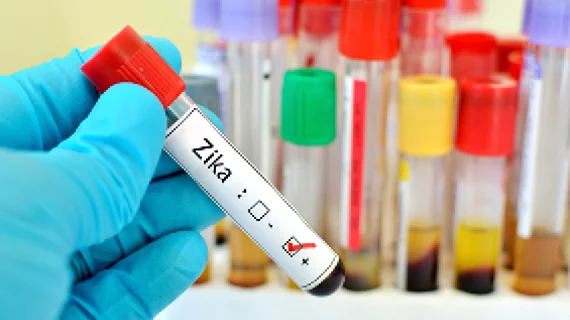Many American physicians aren’t accustomed to treating neglected tropical diseases (NTD), simply because many of their patients just don’t catch them. Illnesses like leprosy, Chagas disease and leishmaniasis, rarely affect people in the U.S.
But as Zika continues to spread, with more than 9,000 documented cases in the U.S., it’s become imperative for American physicians to understand the virus and how it causes microcephaly.
Zika was once considered a neglected tropical disease since there were only about 200 cases per year in the U.S. But with the spike in cases this year, it’s not so neglected anymore. The federal government has dedicated $2 billion to efforts to eradicate it.
In an RSNA presentation Dec. 1, Nicole Dhanraj, PhD, chief of radiology at the Guam Memorial Hospital Authority in Tamuning, Guam, helped raise awareness among radiologists about Zika and other diseases like it, and how they can use their specialty to treat it in the event one of their patients has a NTD.
Neglected tropical diseases affect about 75 percent of the world, or 149 countries, and kills more than 1.4 billion people every year, Dhanraj said. These diseases usually survive in hot, humid environments like Latin America and the Caribbean.
“Poverty has definitely contributed to the cycle of disease in these countries,” Dhanraj said. “If your economy cannot support giving $2 billion to eradicating a disease, you can clearly understand why these diseases happen in these poorer countries.”
To help combat it, radiologists can use imaging methods, such as ultrasounds, MRI scans and radiography, in conjunction with other standard practices to identify and treat diseases. Dhanraj presented several examples of scans that showed what some of these diseases look like in patients, whether it’s in their lungs, bowels or brain.
Although it’s rare for an American to suddenly come down with NTDs, it’s not impossible considering how frequently some Americans are traveling. Dhanraj emphasized the role that a patient’s history can play in trying to figure out what diseases they may have. Have they traveled lately or participated in foreign cultural customs? Or do they know someone who has?
“We cannot afford to profile anybody,” Dhanraj said. “Patient history is a must.”
Related Chagas Disease Content:
Chagas disease increases the risk of CVD
Chagas parasitic heart disease threat creeps into U.S.
Algorithm unmasks bugs bearing diseases
Chagas disease among topics at HRS 2019
AI, microscopic imaging mobile device detects parasitic infections in 20 minutes
RSNA 2016: How imaging can help treat Zika, other tropical diseases

